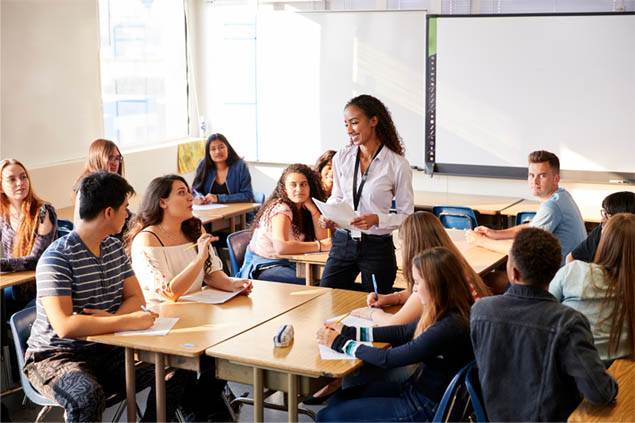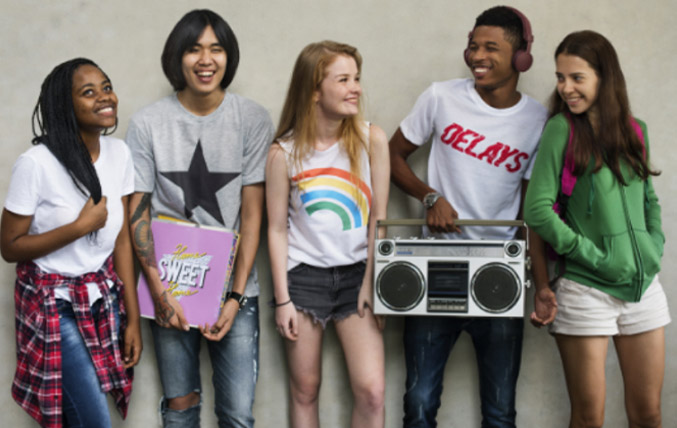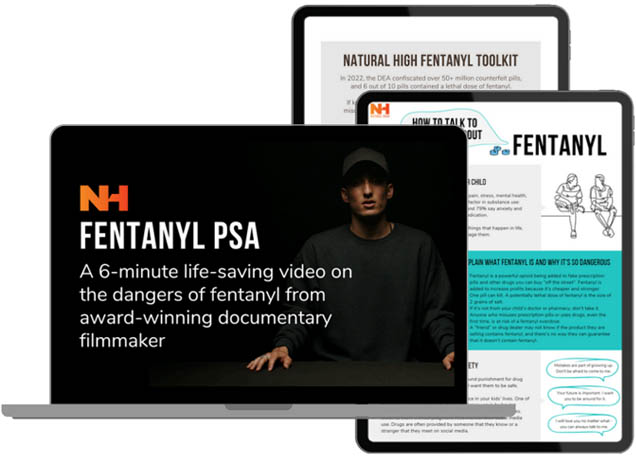
Prevent Fentanyl overdose using our
Free Comprehensive Toolkit
-
Life-Saving Information
Learn the critical facts about fentanyl, its risks, and its prevalence in today’s drug landscape.
-
Engaging Content
Access videos, quizzes, and activities designed to resonate with and captivate young minds.
-
Conversation Guides
Navigate difficult discussions with confidence, building a foundation of trust and openness.
Trusted by Parents and Educators
“We had a productive talk, watched the video, and talked a bit more. My son (age 13) was engaged in the video. It was also really helpful to my husband and I in educating us on fentanyl and teen drug use. The Natural High website is an excellent resource that we will continue to go back to in order to keep the conversation going!”
Shawn, parent
“This is awesome and so educational. I am using myself with my 15 grandkids…The 4 question are great and what is more important is not to seem like I am lecturing them, rather, engaging them in dialogue. I look forward to receiving more educational tools…”
Tony, Grandparent
“I lost my youngest son to fentanyl poisoning in January of 2021. I’m on a mission to be his voice and to raise awareness on Fentanyl and other drugs. I’m holding an awareness event and setting up my computer so attendees have the opportunity to watch it. Thank you so much for putting this together.”
Angie, parent
“We did the fentanyl lesson last week in 7th grade health. We were able to have great class discussions about the video. Thank you for all your materials! I have referred to your materials many times over the course of several years for my drug and alcohol unit in health class.”
Amanda, Health Teacher
Fentanyl, a powerful synthetic opioid, is a critical threat to our kids, changing the landscape of drug use with its potential for fatal overdose.
75K+
people died from fentanyl/synthetic opioids last year
5/10
fake prescription pills contained a potentially lethal dose of fentanyl
360M
deadly doses of fentanyl was seized by DEA in 2023
52%
of teens are unaware that fentanyl is being added to illicit drugs
Tackle The Hard Conversations With Confidence
Talking to kids about fentanyl can be challenging. With the rise of easily accessible substances and the risk of unintentional overdoses, clear communication is key.
Our Fentanyl Toolkit helps you tackle these hard conversations confidently, ensuring kids understand the risks and make safe choices in today’s complex drug landscape.
PROTECT WHAT MATTERS MOST
Download your free Fentanyl Toolkit today and take the first step towards a safer, drug-free future for your family.
FAQs
-
What is Natural High’s youth drug prevention program?
Natural High is a youth drug prevention nonprofit. We offer a variety of videos and tools that are used to support parents and educators in their efforts to prevent drug use. The Natural High program has three easy steps to implementation: 1. Watch one of our 40+ engaging influencer (we call them "Storytellers") videos with kids. 2. Discuss as a class or family using our discussion guides to facilitate a thoughtful conversation. 3. Go deeper with an engaging activity. Each video has specific activities tied to the story that naturally follow the discussion. Our content is all aligned to Common Core and National Health Educator Standards.
-
What is fentanyl?
Fentanyl is a potent prescription synthetic opioid drug approved by the FDA for pain relief and anesthetic. Prescription opioids are powerful drugs with a high risk for dependency. Fentanyl is 80-100 times stronger than morphine. A potentially lethal dose of fentanyl is the size of 2 grains of salt.
-
Why is fentanyl so dangerous?
While you should be concerned about all youth substance use, fentanyl is different because it's so deadly. According to data from the CDC, in 2020 there was a 560% increase in overdose deaths fueled by fentanyl. In the illicit drug market, fentanyl is being mixed with other drugs, such as cocaine, oxycodone, and Adderall. Criminal drug networks are flooding the market with fake pills and other drugs laced with fentanyl. Kids aren't intentionally looking for fentanyl, and they're unaware it's been added to the substances they're seeking. As a result, kids are being poisoned by fentanyl at a staggering rate.
-
How are kids getting fentanyl?
Fake prescription pills and other illicit substances are easily accessible and often sold on social media and e-commerce platforms making them available to anyone with a smartphone, including minors. Those at risk include casual users, partygoers, experimenters, regular users, and even unsuspecting bystanders who may come into contact with the powerful opioid.
-
How can I prevent fentanyl use?
Education is a key part of helping today’s youth make healthy choices. They need accurate information from trusted sources. That’s why your role is so crucial when it comes to the fentanyl crisis. Neither kids today nor their parents are aware of the growing dangers of fentanyl poisoning. Research has shown that kids who have opportunities to discuss the harms of drug use with caring adults fare much better. So, we encourage you to both watch the film together and have a discussion using the questions we created in the Natural High Fentanyl Toolkit. Even if substance use is the last thing you need to worry about with your kid or your students, perhaps their awareness could save a friend.
-
What are fake prescription pills?
Counterfeit pills are fake medications that have different ingredients than the actual medication and are sold as the real thing. Fake pills have a 50% chance of being laced with a lethal amounts of fentanyl. These counterfeit pills, also known as “fentapills”, are driving the significant increase in youth overdose deaths. Fentapills are made to look just like prescription drugs such as oxycodone (Oxycontin®, Percocet®), hydrocodone (Vicodin®), and alprazolam (Xanax®); or stimulants like amphetamines (Adderall®). Fake prescription pills are easily accessible and often sold on social media.
-
is there a way to tell if fentanyl has been mixed into a pill or powder?
No one can tell if fentanyl has been mixed into a pill or powder just by looking at it. If a pill is not from a doctor or pharmacy, there's a 50% chance it contains a lethal does of fentanyl. The best way to stay safe is to avoid illegal substances and avoid any pills if they're not prescribed specifically to you.
-
What are the signs of a fentanyl overdose?
Recognizing the signs of a fentanyl overdose is crucial for timely intervention and potentially saving a life. Here are the primary signs and symptoms of a fentanyl overdose:
- Extreme drowsiness or unresponsiveness: The individual may be difficult to wake up or may not respond to external stimuli.
- Slow or erratic breathing: Breathing may be shallow, slow, or completely stopped.
- Pinpoint pupils: Pupils may become extremely small, even in low light.
- Cold and clammy skin: The skin may feel cold to the touch and appear pale or bluish, particularly around the lips and fingernails.
- Weak pulse: The person's pulse may be weak, slow, or irregular.
- Limp body: The body may become limp and floppy.
- Choking or gurgling sounds: The person may make unusual sounds that indicate difficulty breathing, sometimes referred to as a "death rattle."If you suspect someone is experiencing a fentanyl overdose, it's critical to seek emergency medical help immediately by calling 911.
Additionally, administering naloxone (Narcan), if available, can reverse the effects of a fentanyl overdose and buy time until professional medical help arrives.
For further information and resources on preventing fentanyl use and encouraging positive choices among young people, check out Natural High's program and educational resources.
-
What resources are included in the Fentanyl Toolkit?
The Fentanyl Toolkit offers a comprehensive set of materials designed for educators, parents, and community leaders:
- 6-minute Fentanyl PSA video: A compelling short film highlighting the dangers of fentanyl.
- Fentapill Lesson Plan: Educates students in grades 6–12 about counterfeit pills and fentanyl risks.
- Discussion Guides: Facilitate meaningful conversations with youth.
- Printable Fact Sheets: Available in English and Spanish, providing key information about fentanyl.
- Parent Conversation Guide: Offers tips for discussing fentanyl with children.
- Film Screening Guide: Assists in organizing impactful community or school events.
- Interactive Quizzes: Engage students and reinforce learning.These resources are designed to be flexible and adaptable to various settings. Check us out on social media where we've showcased organizations and individuals helping to spread awareness and prevent fentanyl poisoning.
-
How can I use the toolkit in my community or school?
The toolkit is versatile and can be integrated into multiple settings:
- Classroom Lessons: Incorporate into health or advisory classes.
- School Assemblies: Use the PSA and discussion guides to educate larger groups.
- After-School Programs: Engage students in interactive activities and discussions.
- Community Events: Host film screenings and distribute fact sheets.
- Parent Meetings: Share resources and conversation guides to encourage at-home discussions.You these materials to foster awareness and prevention efforts within your community and your own home.
-
What age is the content suitable for?
The primary materials in the Fentanyl Toolkit are geared towards students in grades 6–12. However, educators, parents, and anyone working with younger students can adapt the content by:
- Focusing on general discussions about making healthy choices.
- Using age-appropriate language to explain the concept of natural highs.
- Engaging in activities that promote positive decision-making.It's recommended to preview all materials to ensure they align with your students' maturity levels.
-
Are the resources available in other languages?
Yes, several resources within the toolkit are available in Spanish, including:
- Fentanyl Fact Sheets
- Parent Conversation Guides -
How can I stay updated on new resources in the future?
To receive the latest updates on new materials, events, and prevention strategies:
- Sign up for the Natural High Essentials weekly newsletter: Stay informed about new tools and tips for engaging youth.
- Visit the Natural High blog: Read articles on prevention strategies and actionable .
- Follow Natural High on Social Media: Engage with the community and access shareable content.
Instagram
Facebook
Twitter/X -
What is carfentanil? Is it different than fentanyl?
Carfentanil is an extremely potent synthetic opioid. It’s 100 times stronger than fentanyl. Like fentanyl, it’s being mixed into other drugs and counterfeit pills sold on the illicit market, but its greater strength makes it far more dangerous.
Overdoses involving carfentanil are much harder to reverse. While naloxone is commonly used to treat opioid overdoses, it may not work on carfentanil at standard doses. Multiple, high doses are often needed, and even then, a successful reversal is not guaranteed.
Who We Are
Natural High is a substance abuse prevention nonprofit that inspires and empowers youth to find their natural high and develop the skills and courage to live life well.
Our evidence-backed program is used in all 50 states and makes use of current scientific findings on youth behavior, brain development, social norming, and substance abuse prevention. The latest scientific research speaks to the power of positive example, of engaging influencers to create change in culture, and of course — the power of the natural high. This research shows that when young people find their true passions — those activities that uplift, motivate, and inspire them — and are supported in these choices by family, friends, school, and community, they are more likely to avoid drugs and alcohol. Natural High has dozens of Red Ribbon Week ideas for drug-free week and throughout the year.
Real Results
83%
of educators report a change in their students’ perception about drugs and alcohol after going through the Natural High program.
83%
of youth participating in the program reported that having a natural high will help fight the temptation to use drugs or alcohol.
40+ We’ve recruited over 40 celebrity storytellers who tell powerful stories of transformation.
43,000
There are 43,000 educators in Natural High’s network across the U.S. and growing.
Millions Millions of lives transformed. Still lots of work to do. That’s why we need your support
Awards and Recognition
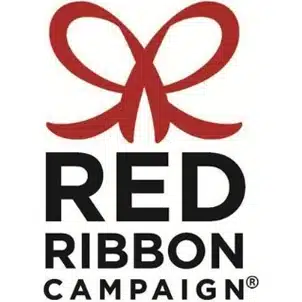
Outstanding Prevention Program Award
Dedication and leadership to building a safe and healthy San Diego county.
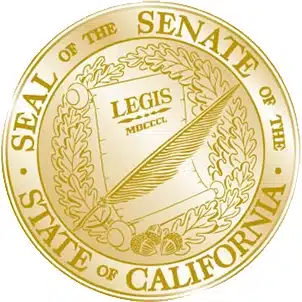
Outstanding Prevention Award
Leadership in drug prevention education, advocacy and support of our nation's families and communities.
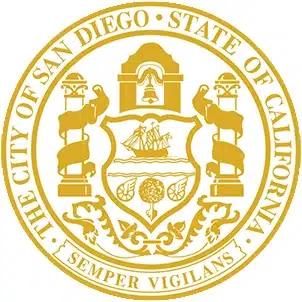
Outstanding Prevention Program Award
Exemplary service and selfless dedication in reducing youth access to alcohol, tobacco and other drugs.







